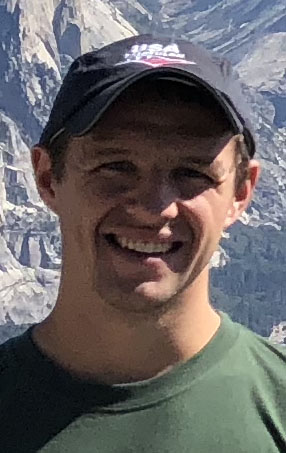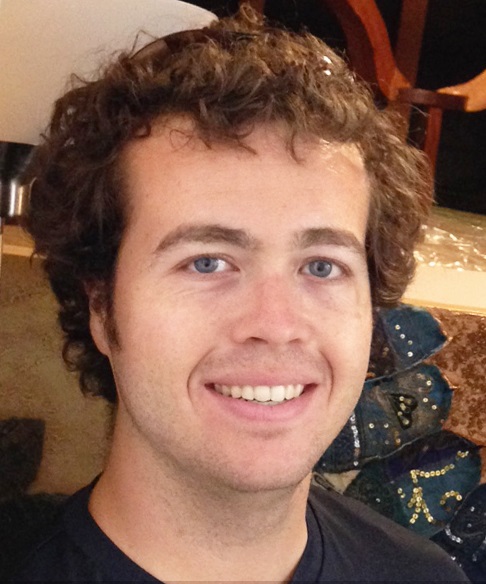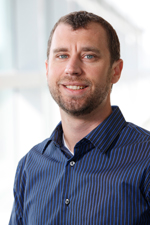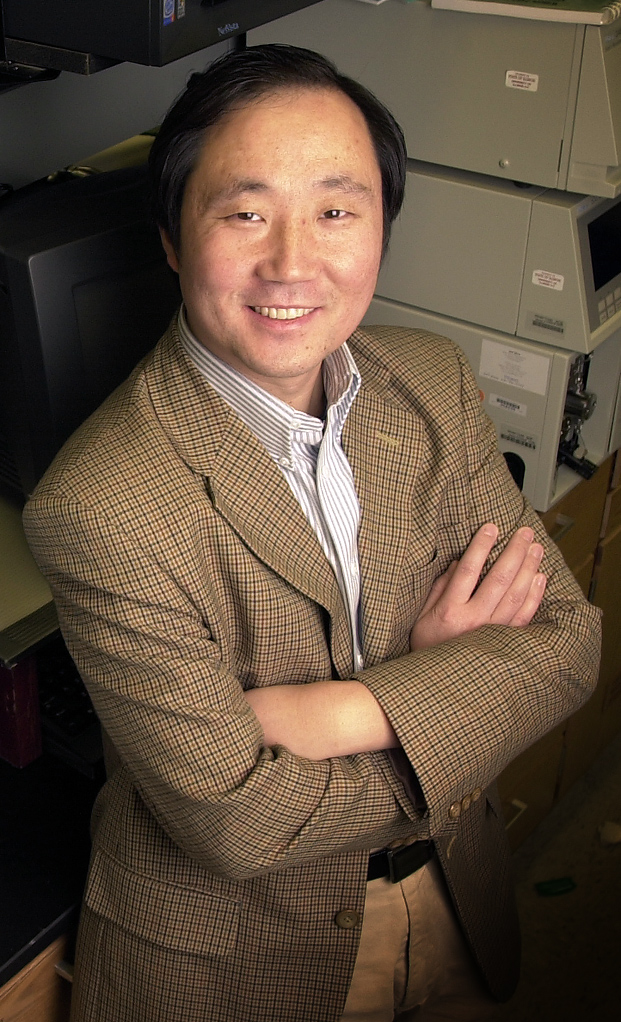

Thursday, December 12, 3:30pm - 4:30pm, NHB 1.720
Stanford University
PhD, UC Berkeley, 2017 (Long)
We approach solid-state materials using the tools of synthetic molecular chemistry and design hybrid materials featuring properties of both molecules and extended solids. We target materials for applications in clean energy such as sorbents for environmental pollutants, electrodes for secondary batteries, phosphors for solid-state lighting, and absorbers for photovoltaics. We also design discrete molecular centers for the catalytic activation of small molecules relevant to clean energy cycles. Exploration is at the forefront of our research efforts and we work with researchers in disciplines such as applied physics, geology, and materials science to drive the discovery of new materials. We synthesize organic, inorganic, and hybrid materials using solution- and solid-state techniques, including glovebox and Schlenk-line methods. We determine the structures of our materials using powder- and single-crystal x-ray diffraction. We also use a host of spectroscopic and electrochemical probes, imaging methods, and film deposition techniques. We further characterize our materials under extreme environments and in operating devices to tune new materials for diverse applications in renewable energy.
Publications (Google Scholar Citations)
ORCID: https://orcid.org/0000-0002-0740-0731
h-index: 9 Total Articles: 10 Total Citations: 604 (Web of Science, Nov. 2019)
h-index: 9 Total Citations: 694 (Google Scholar Citations, Nov. 2019)
Monday, December 9, 3:30pm - 4:30pm, WEL 2.122
UC Berkeley
PhD UC San Diego, 2016
We are developing metal-organic frameworks for room temperature hydrogen and methane storage for applications in automotive transportation. Both of these gases are cleaner burning than gasoline but cannot be stored at sufficient densities at room temperature for use as fuels. For this to be feasible, the density of strong binding sites for both of these gases must be increased over currently known adsorbents. Metal-organic frameworks offer high porosity and control of the binding sites within the framework pores; by selectively modifying frameworks and exploring new frameworks, we are discovering materials that strongly interact with and store both of these gases at high densities.
Publications (Google Scholar Citations)
h-index: 10 Total Articles: 15 Total Citations: 357 (Web of Science, Nov. 2019)
h-index: 9 Total Citations: 286 (Google Scholar Citations, Nov. 2019)
Wednesday, November 6, 3:30-4:30pm, WEL 2.122
Professor
University of Oregon
Abstract: Platinum compounds are employed extensively in chemotherapeutic regimes. Despite decades of worldwide use, there is no comprehensive description of cellular targets of these small inorganic compounds or convenient method of detecting them in cells. We have developed a new toolkit of platinum reagents that are modified for post-treatment ‘click’ cycloaddition reactions. With these reagents, we find that post-treatment fluorescent labeling in mammalian cell culture shows distinct accumulation of Pt compounds in the nucleolus, potentially linking antitumor activity to defects in ribosome assembly. Pulldown experiments also identify protein-folding chaperones that become Pt-bound during treatment. We have combined these approaches with time-dependent differential gene expression analysis of mammalian cells, allowing visualization of expression programs that are changing during treatment. Although well-known as DNA damaging reagents, several results point to an influence of platinum compounds on nucleolar activities, and platinum ligands direct selective activation of ribosome biogenesis stress pathways. Activation of nucleolar stress may explain different treatment outcomes for combinations of platinum reagents and cancer subtypes.
Publications (Google Scholar Citations)
h-index: 35 Total Articles: 70 Total Citations: 3136 (Web of Science, Oct. 2019)
h-index: 42 Total Citations: 4713 (Google Scholar Citations, Oct. 2019)
Inorganic + A&P Division Seminar
Wednesday, October 30, 3:30-4:30pm, WEL 2.122
Assistant Professor
Washington University - St. Louis
Abstract: Defect engineering is a strategy that has been widely used to design active semiconductor photocatalysts. However, understanding the role of defects, such as oxygen vacancies, in controlling photocatalytic activity remains a challenge. In this talk I will discuss the use of chemically triggered fluorogenic probes to study the spatial distribution of active regions in individual tungsten oxide nanowires using super-resolution fluorescence microscopy. Through quantitative, coordinate-based colocalization of different probe molecules activated by the same nanowires, we demonstrate that the nanoscale regions most active for the photocatalytic generation of hydroxyl radicals also possess a greater concentration of oxygen vacancies. Chemical modifications to remove or block access to surface oxygen vacancies, supported by calculations of binding energies of adsorbates to different surface sites on tungsten oxide, show how these defects control catalytic activity at both the ensemble and single-particle level. These findings reveal that oxygen vacancies activate surface-adsorbed water molecules towards oxidation by using photogenerated holes to produce hydroxyl radicals, a critical intermediate in the photocatalytic oxidation of water, methane, and environmental pollutants.
h-index: 15 Total Articles: 26 Total Citations: 3144 (Web of Science, Oct. 2019)
Wednesday, September 25, 3:30-4:30pm, WEL 2.122
Winston Ko Chair and Distinguished Professor
UC Davis
The Britt lab is investigating structure and function of biologically significant enzymes with redox-active transition metal centers, clusters or organic radicals in their active site. We have focused these efforts on enzymes important in bioenergy such as the oxygen-evolving photosystem II and the H2-forming [FeFe] hydrogenase as well as the diverse and growing family of radical SAM enzymes that employ an adenosyl radical to initiate a wide range of chemical transformations. Our primary research tool is advanced electron paramagnetic resonance (EPR) spectroscopy. We operate the CalEPR center, home to six continuous-wave and pulse EPR instruments ranging in frequency from 9 to 130 GHz. CalEPR is the largest center of its kind on the West coast.
Publications (Google Scholar Citations)
h-index: 49 Total Articles: 194 Total Citations: 8164 (Web of Science, Aug. 2019)
h-index: 60 Total Citations: 10,721 (Google Scholar Citations, Aug. 2019)
Wednesday, September 4, 3:30-4:30pm, WEL 2.122
Assistant Professor
Ohio State University
Research in the Wade Lab encompasses molecular inorganic/organometallic chemistry and materials science with a focus on the design and study of new catalytically active molecules and materials. Current projects involve the synthesis of metal-organic frameworks (MOFs) constructed from catalytically active transition metal complexes, the design of bio-inspired MOF adsorbents for trace CO2 capture, and the investigation of new redox-active ligand platforms. Synthesis plays a central role in our research program, and a variety of solution and solid-state characterization techniques are used to elucidate the structure and properties of newly synthesized materials. These include X-ray diffraction, gas porosimetry, thermogravimetric analysis, ICP-OES, cyclic voltammetry, and NMR, IR, and UV-Vis spectroscopies.
Publications (Google Scholar Citations)
h-index: 19 Total Articles: 32 Total Citations: 1985 (Web of Science, Jul. 2019)
h-index: 19 Total Citations: 2335 (Google Scholar Citations, Jul. 2019)
Wednesday, May 8, 3:30-4:30pm, WEL 2.122
Jay and Ann Schenck Professor
University of Illinois
The Lu Group’s interests lie at the interface between chemistry and biology. We are developing innovative chemical approaches to provide deeper insight into biological structures and functions, while also taking advantage of recently developed biological tools to advance many areas in chemistry, such as inorganic chemistry, chemical biology, analytical chemistry, and materials chemistry. Novel Sensing and Imaging Agents for Metals and Other Metabolites in Environmental Monitoring, Food Safety, Medical Diagnostic and Therapy: Selective sensors and imaging agents are very useful for on-site and real-time detection in environmental monitoring, food safety, medical diagnostics, and imaging. While much progress has been made in detecting large molecule targets, such as nucleic acids and proteins, sensing and imaging small molecule targets and biomarkers, such as metal ions and organic metabolites, remain difficult because they are very large in different species, subtle in structural differences, and present in trace amounts. Therefore, detection in metabolomics has become a new frontier for chemical biologists following advancements made in genomics and proteomics. We have identified challenges in both fundamental science and in technological development, and we have made significant progress in meeting these challenges.
Publications (Google Scholar Citations)
h-index: 88 Total Citations: 32,237 (Google Scholar Citations, Apr. 2019)
Wednesday, February 13, 3:30-4:30pm, WEL 2.122
Assistant Professor
MIT
Global challenges in the areas of chemical catalysis, energy storage and utilization, and environmental stewardship require new methods for controlling the selectivity and efficiency of inner-sphere reactions at solid-liquid interfaces. Our group works to solve these problems via bottom-up, molecular-level engineering of functional inorganic interfaces with a focus on electrochemical energy conversion.
h-index: 33 Total Articles: 53 Total Citations: 6826 (Web of Science, Jan. 2019)
Wednesday, February 6, 3:30-4:30pm, WEL 2.122
Professor, Biochemistry
University of Colorado Boulder
Our research lies at the interface of chemistry and biology, where the application of chemical and physical principles provides a unique opportunity to better understand the fundamental biochemistry of living cells. Cells are complex entities that must integrate internal and external signals in order to coordinate diverse functions. Living cells are also dynamic, and this dynamism is key to understanding the mechanisms between cause and effect for biological processes. Deciphering the molecular details of how cellular constituents define healthy and diseased states, and how dynamics propagate from the cellular to the organismal level, is one of the great challenges in modern biology. Our lab develops new technologies to interrogate signaling cascades in cells to understand how the actions of specific proteins, molecules, and ions contribute to cellular function. We combine in vitro spectroscopic and biophysical techniques with protein design and engineering to develop novel fluorescent probes, and use long-term time-lapse fluorescence microscopy to elucidate the mechanisms of cellular signaling pathways. Longitudinal single-cell analyses also allow us to explore the origins and consequences of heterogeneity in biological systems. We are specifically interested in how cells regulate metal ions, how pathogens alter cell biology, and how to engineer improved photophysical properties in fluorescent proteins.
h-index: 36 Total Articles: 67 Total Citations: 10,007 (Web of Science, Jan. 2019)
Faculty Recruiting Seminar
Thursday, January 24, 3:30-4:30pm, WEL 2.122
Postdoctoral Researcher
University of Washington
PhD Caltech, 2016 (Jonas Peters)
The Gamelin group's research targets the development and physical characterization of new functional inorganic materials with unusual electronic structures that give rise to desirable photophysical, photochemical, chemical, electronic, magnetic, or magneto-optical properties.
h-index: 10 Total Citations: 629 (Google Scholar Citations, Jan. 2019)
h-index: 10 Total Articles: 13 Total Citations: 509 (Web of Science, Jan. 2019)
The Seminars page is brought to you by the University Libraries. Our intent is to provide a quick profile of our guest speakers, links to their research group sites, recent publications, author metrics, and other information to enhance your engagement with the guests.

This work is licensed under a Creative Commons Attribution-NonCommercial 4.0 Generic License.